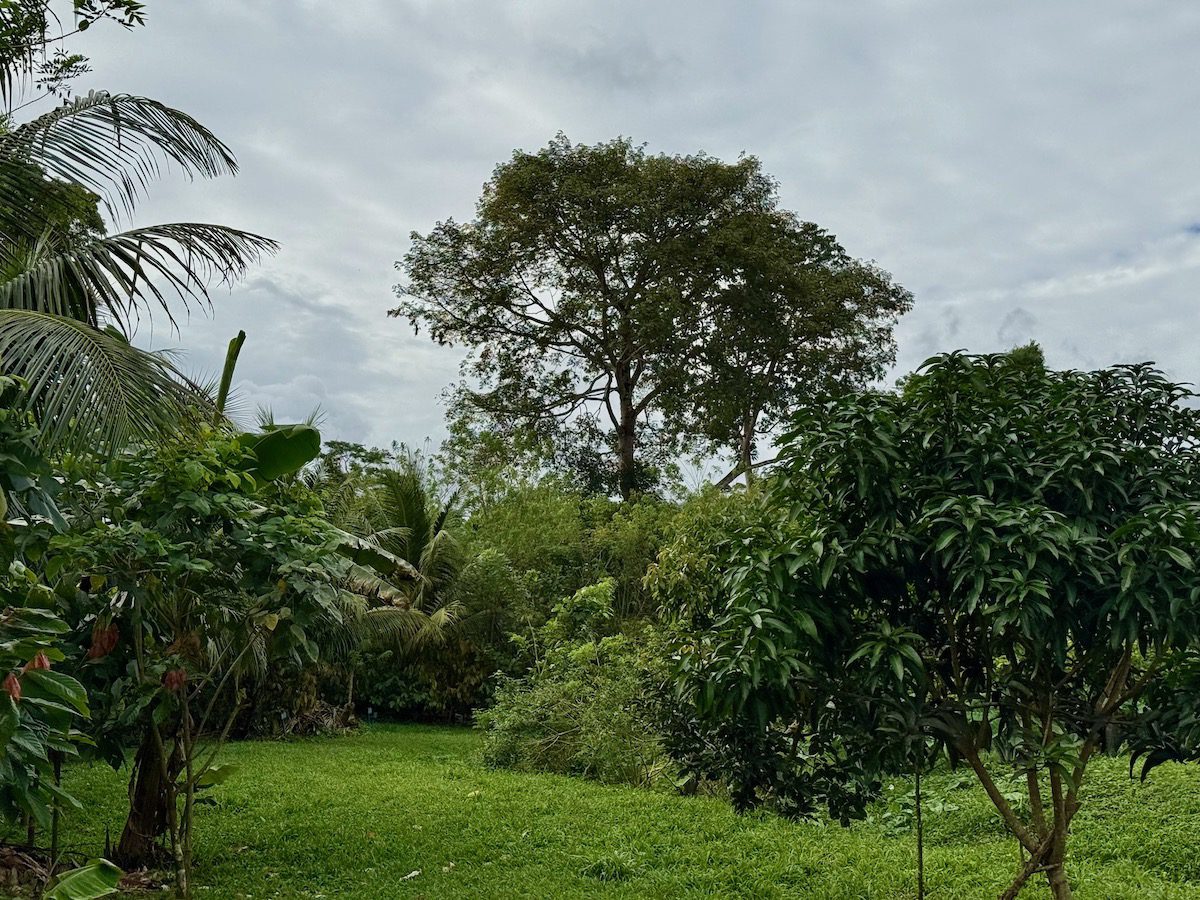Cacao-Agroforestry
The discovery of wild Criollo cacao within BFREE’s tropical rainforest reserve has created a unique opportunity for local conservation action and the potential for a global impact.

One of the rarest cacaos ever documented, 100% genetically pure Criollo, grows wild at BFREE. This shade-loving variety thrives under the canopy of the rainforest and was designated "Heirloom Fine Flavor" by the Heirloom Cacao Preservation Fund (HCP) in 2016.
In 2019, BFREE established a cacao agroforestry program using this wild Criollo cacao to preserve this unique treasure and investigate the potential of providing environmental, social, and economic benefits for local farmers. Over 25,000 trees have been planted since the project's inception - including 12,500 grafted Criollo cacao trees and 14,000 shade trees representing 25 local species.
The Big
Picture

Unsustainable cacao production in tropical countries including Belize continues to expand at an alarming rate. Along with this increase in production is the challenge of conserving the very same ecosystems which are being replaced with monoculture crops.
The Focus
on Cacao

This variety of cacao thrives in the shaded rainforest making this discovery especially exciting. Growing Criollo cacao provides the opportunity to incentivize tropical forest conservation and restoration because it is a crop with a high global demand.
The Need for
Conservation

The discovery of Criollo cacao on the BFREE Privately Protected Area is evidence of the biodiversity found with in these forests and highlights the important of conserving these diverse ecosytems. Many other mysteries still remain to be discovered.
The Unique Cacao at BFREE
When were the Criollo cacao trees discovered at BFREE?
In 1993, when the BFREE property was first secured, wild cacao trees were found scattered throughout 1,153 acre forest. However, their uniqueness wasn't recognized immediately. Watch a short video about the discovery of wild Criollo trees. The property is part of Maya Mountain Massif, which is described as one of the least disturbed and largest continuous expanses of tropical rainforest north of the Amazon.
What is the cultural significance of this discovery?
Once believed lost to hybridization, 100% pure Criollo cacao is a true relic. In 2015, based on the advice of cacao experts, beans from the wild trees were submitted for genetic testing. The results determined that this could be the original chocolate tree, 100% pure Criollo parentage, grown and revered by early indigenous peoples thousands of years ago.
What designation does the BFREE Criollo cacao hold?
In 2016, the beans were given the designation “heirloom fine flavor” by HCP. At that time it was only the 11th chocolate in the world to receive such an honor. The HCP designation is given based on flavor. Further genetic studies by the USDA and the Cacao Research Centre at the University of the West Indies discovered that the wild trees were all 100% Criollo parentage. Watch the HCP Video about BFREE.
Does BFREE have chocolate made from its Cacao for sale?
Although BFREE does not sell chocolate, the beans produced from our agroforestry program are used to make some of the finest chocolate in the world. Chocolate products can be purchased online through Caputo's Market & Deli and coming soon through the newly established company based in Belize called CrioCo.
More About the Program
Take a Tour of the BFREE Cacao Agroforest
Curious About Cacao?
Enjoy this video highlighting cacao at BFREE!
Mailing Address
BFREE Field Station
PO Box 129
Punta Gorda
Belize, Central America
Phone
011.501.621.6685
Email
contact@bfreebz.org
Mailing Address
BFREE Field Station
PO Box 129
Punta Gorda
Belize, Central America
Phone
011.501.621.6685
Email
contact@bfreebz.org
US for BFREE is a Florida non-profit,
tax-exempt 501(c)(3) organization.








